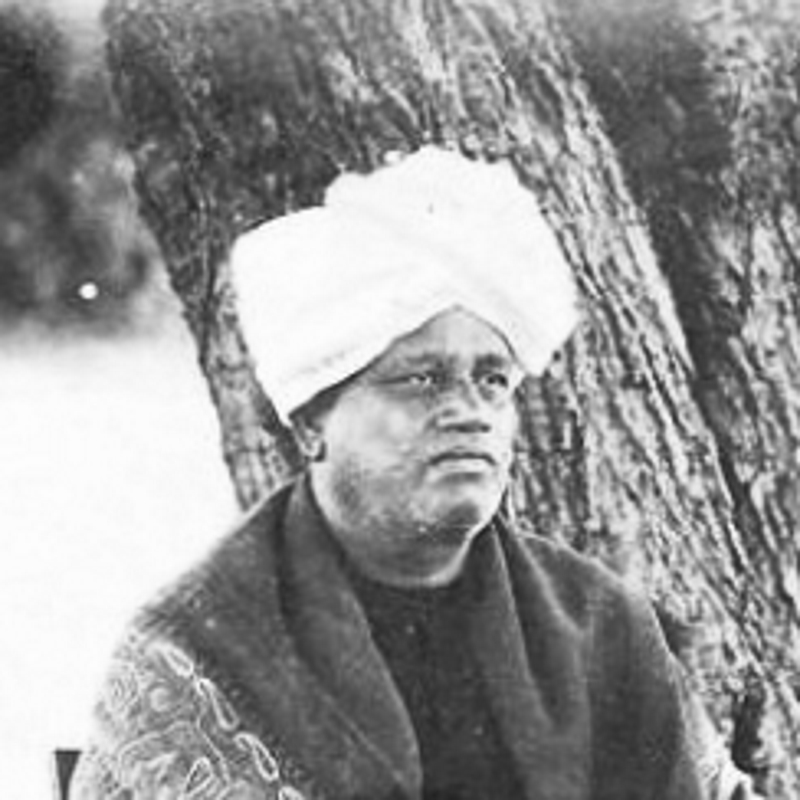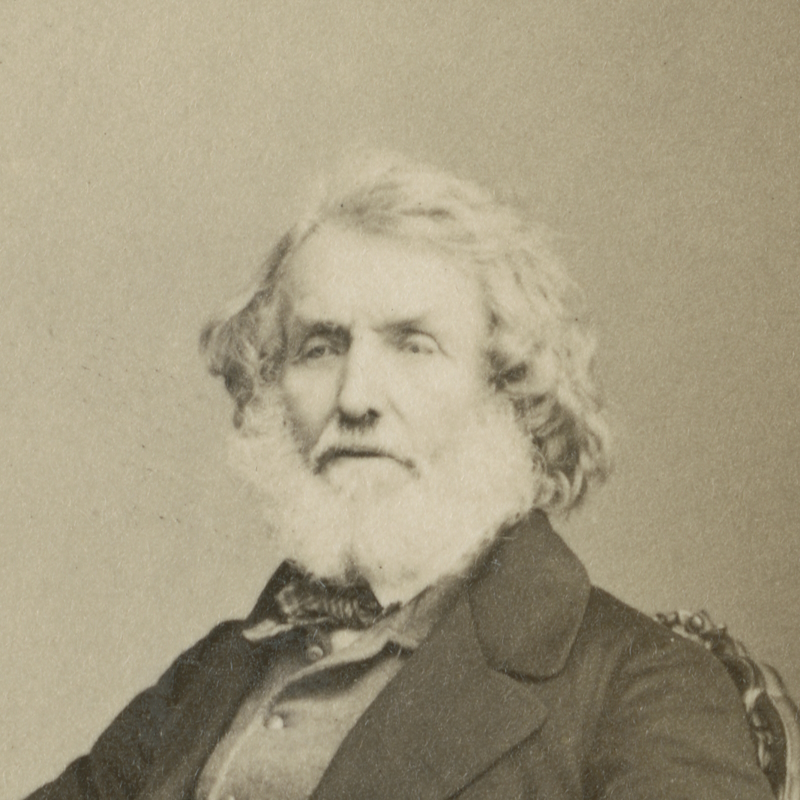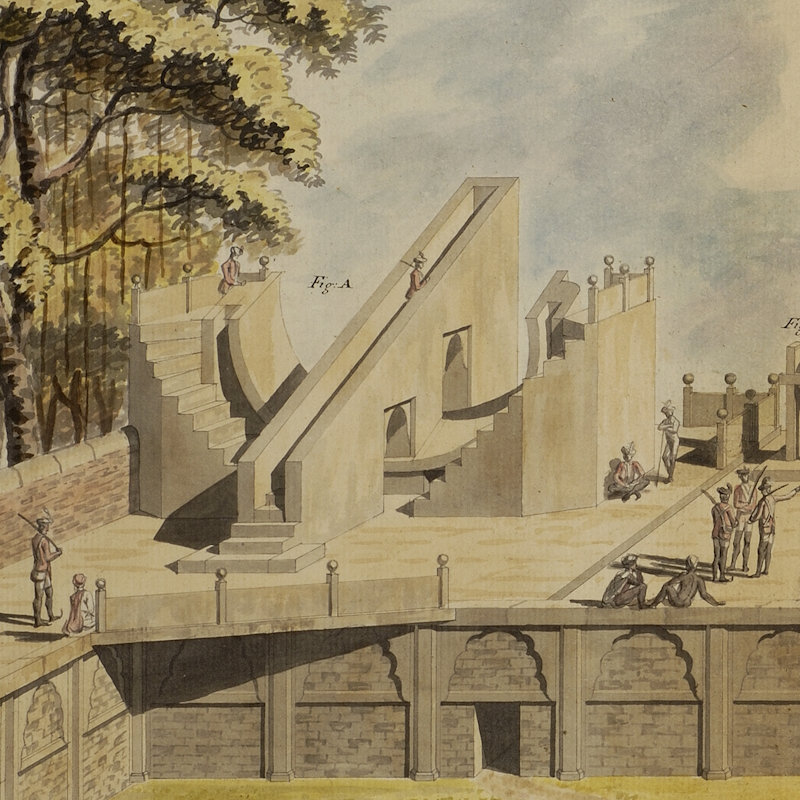Initiated in 1837 by Swathi Thirunal Rama Varma, Maharaja of the Kingdom of Travancore, the Trivandrum Observatory had strong links with Fellows of the Royal Society, as Hirra Ateeq discovers.
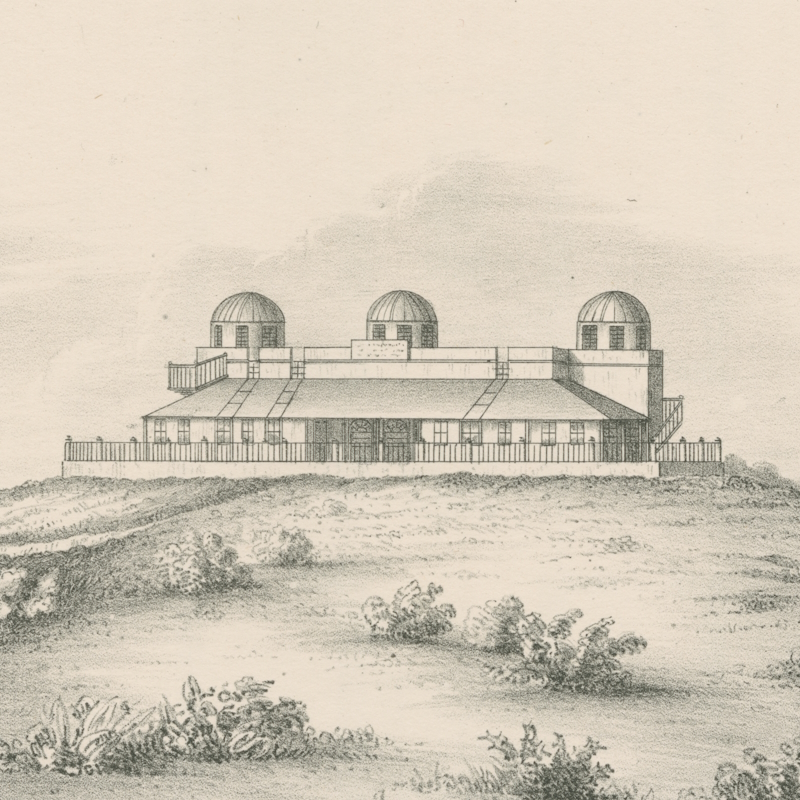
Our recent Google Arts & Culture exhibition, The Royal Society and India, showed how Indian science is a consistent thread throughout the Royal Society’s collections.
As I previously noted in my Magnetism and Madras blogpost, several magnetic observatories were set up across the globe as part of the British 'magnetic crusade' to observe and chart the Earth’s magnetic field. While cataloguing the correspondence of physicist Sir Edward Sabine FRS (1788-1883), I came across some interesting details on another one: the Trivandrum Observatory.
 ‘Trevandrum Observatory... from the North West’ (1839) RS.10146
‘Trevandrum Observatory... from the North West’ (1839) RS.10146
What struck me most about this observatory was that its construction was initiated by an Indian local ruler, Swathi Thirunal Rama Varma, Maharaja of the Kingdom of Travancore. Over the course of the British magnetic scheme, we see time and time again British colonial institutions instigating the building of observatories across the globe in the pursuit of science. However, in this instance Maharaja Swathi Varma wrote to suggest the idea to British commanding officer James Stuart Fraser. This led to the establishment of the observatory in Trivandrum (now Thiruvananthapuram) in 1837.
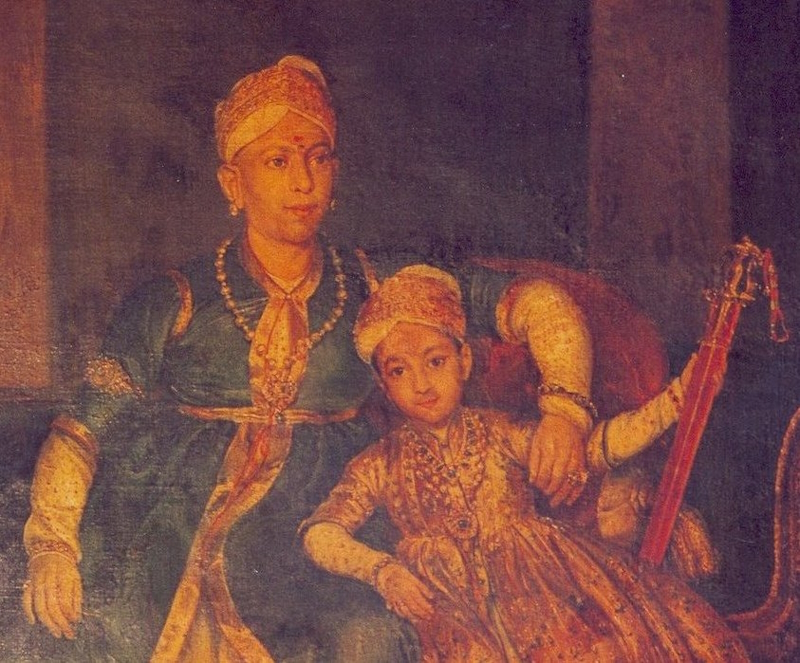 The young Swathi Thirunal Rama Varma with his father Raja Raja Varma Koil Thampuran (public domain via Wikimedia Commons)
The young Swathi Thirunal Rama Varma with his father Raja Raja Varma Koil Thampuran (public domain via Wikimedia Commons)
From its inception, the observatory had strong links with Fellows of the Royal Society. John Caldecott FRS (1800-1849) was appointed its first Director and Maharaja Varma’s Royal Astronomer. Caldecott made observations from 1837 to 1849, and gave a detailed description of the building in an article for the Madras Journal of Literature and Science. He remarked on the opportunity that had been afforded to be of benefit to science without placing great demands on the ‘funds of the state’. Lieutenant William Henry Horsley of the Madras Engineers erected the original building, 78ft in length and 38ft in breadth, on a hill which was a ‘solid mass of laterite’.
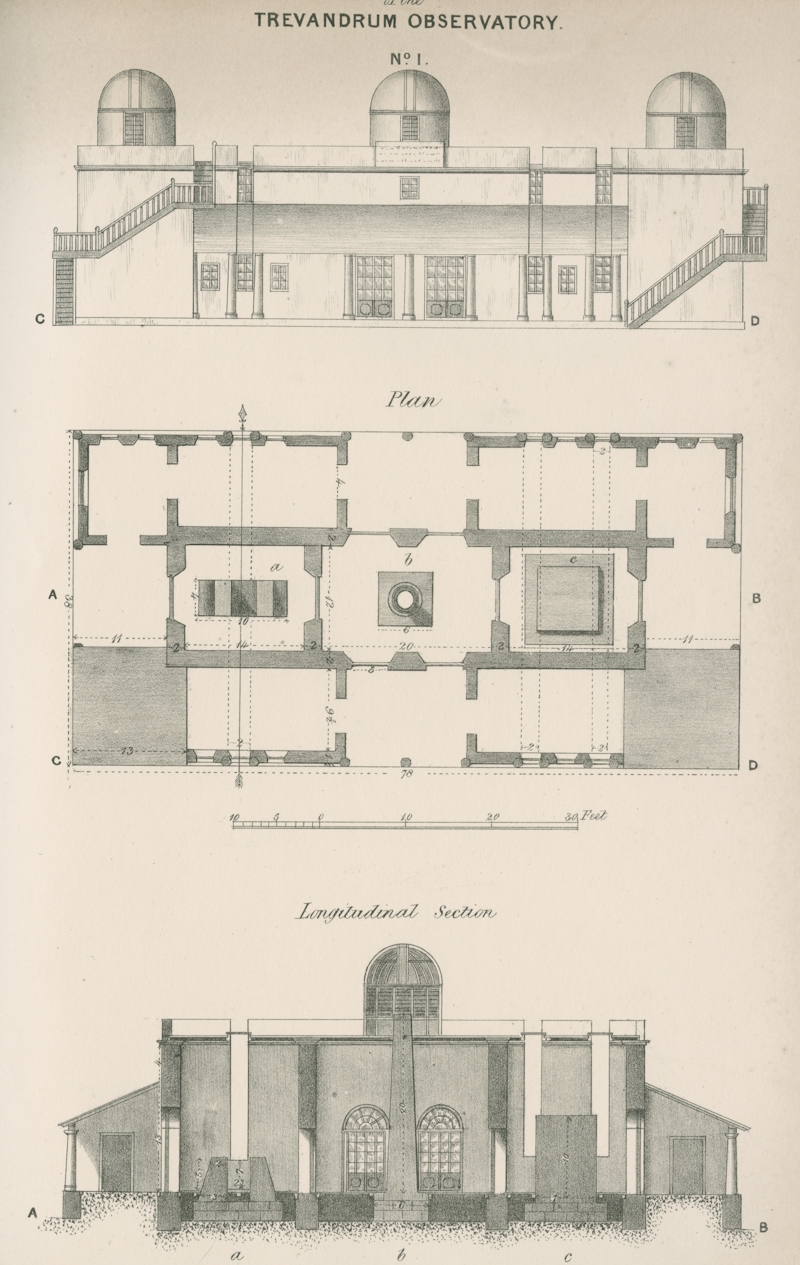 ‘Trevandrum Observatory’ (1839) RS.10147
‘Trevandrum Observatory’ (1839) RS.10147
No expense appears to have been spared in the procurement of instruments for the institution: in a letter (below) to Humphrey Lloyd written on 23 November 1839, Edward Sabine remarked that Caldecott had come from Trivandrum to London to make purchases before going on to Dublin to order more instruments directly from Thomas Grubb.
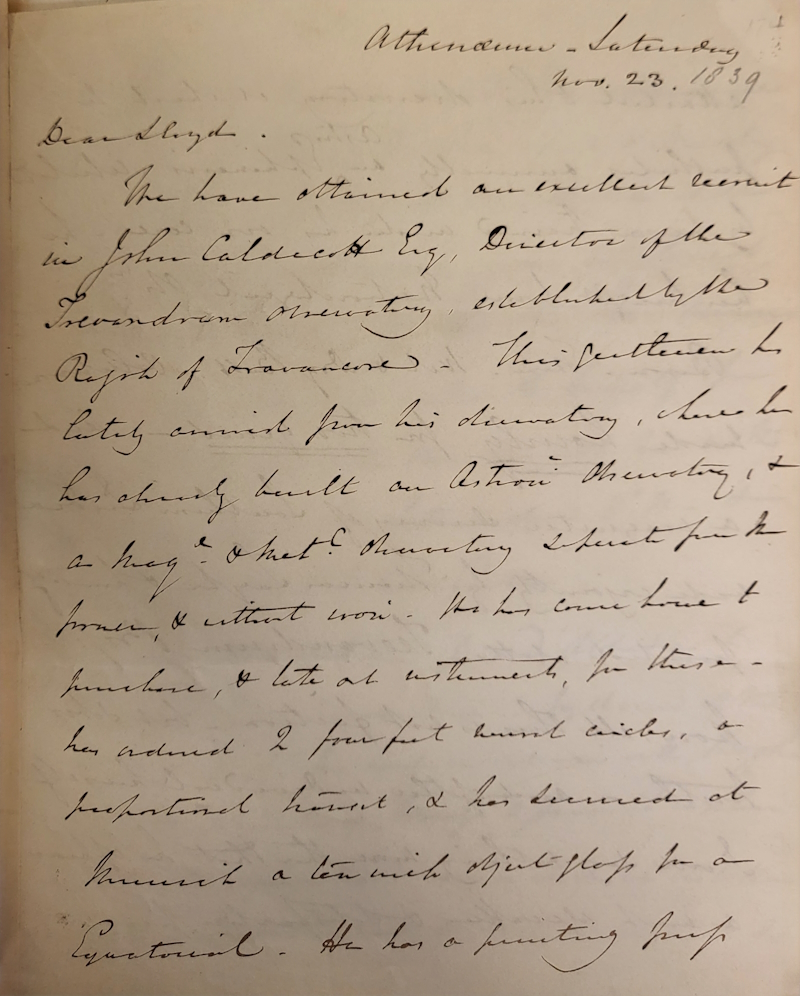 Letter from Edward Sabine to Humphrey Lloyd (1839) MS/119/1/77
Letter from Edward Sabine to Humphrey Lloyd (1839) MS/119/1/77
In 1842 the observatory expanded, with another building added to house a Dolland equatorial telescope. The Sabine correspondence includes a copy of a letter (below) dated 4 January 1843 to Caldecott, in which the Maharaja of Travancore quashed rumours that he was displeased with expenses being incurred and was intending to halt the project. Instead, Maharaja Varma reaffirmed his commitment to the institution and his desire for its ‘permanent’ continuation as an important scientific site.
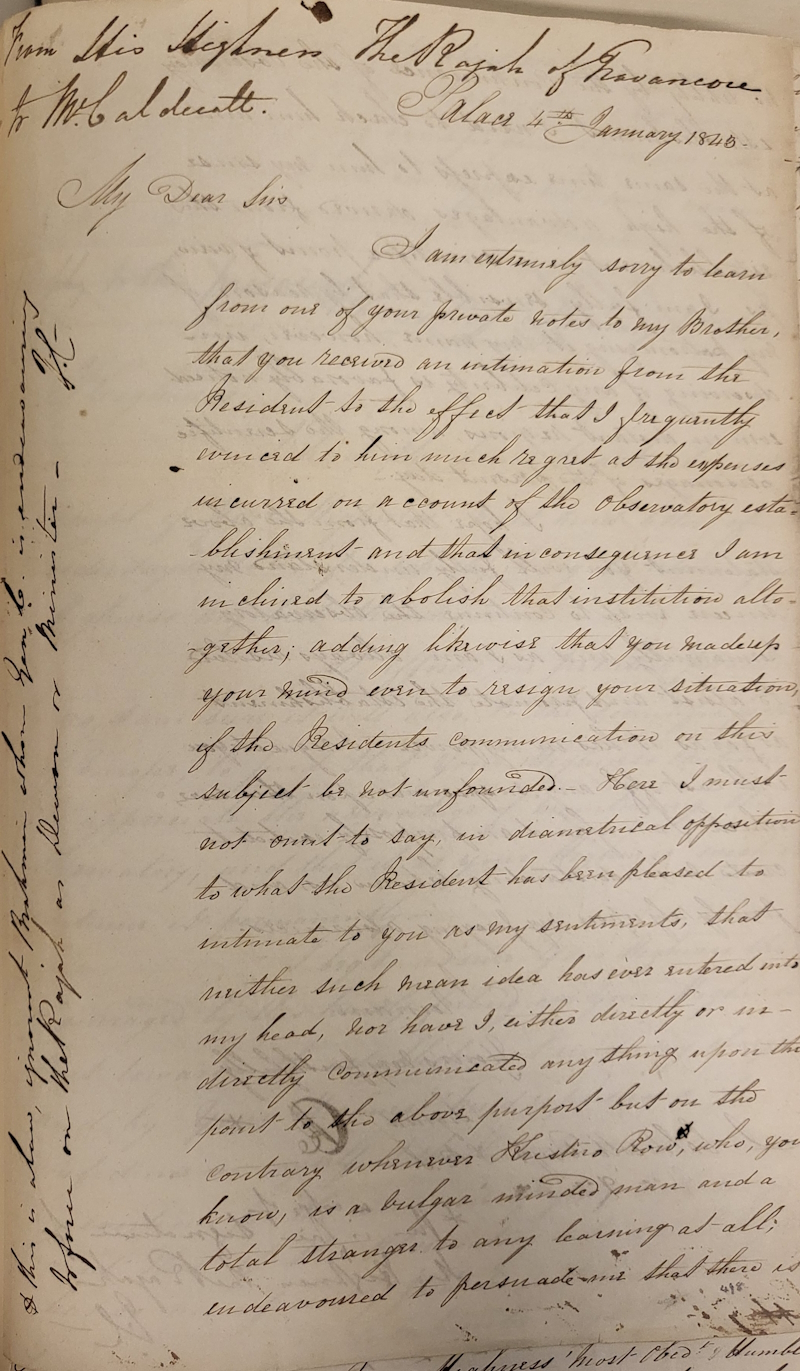 Copy of letter from the Maharajah of Travancore to John Caldecott (1843) MS/257/1/275
Copy of letter from the Maharajah of Travancore to John Caldecott (1843) MS/257/1/275
After Caldecott’s death in 1849, Trivandrum Observatory came under the leadership of John Allan Broun (1817-1879). Broun, elected to the Fellowship of the Royal Society in 1853, had previously directed the Makerstoun observatory in Scotland. He began his directorship ‘with the conception of an interesting and important problem in terrestrial magnetism’ which would require observations to be made across a range of stations, and wanted to ‘determine how far the physical constants of terrestrial magnetism and their various changes depend on difference of height, of latitude, and of longitude’, as described in this article.
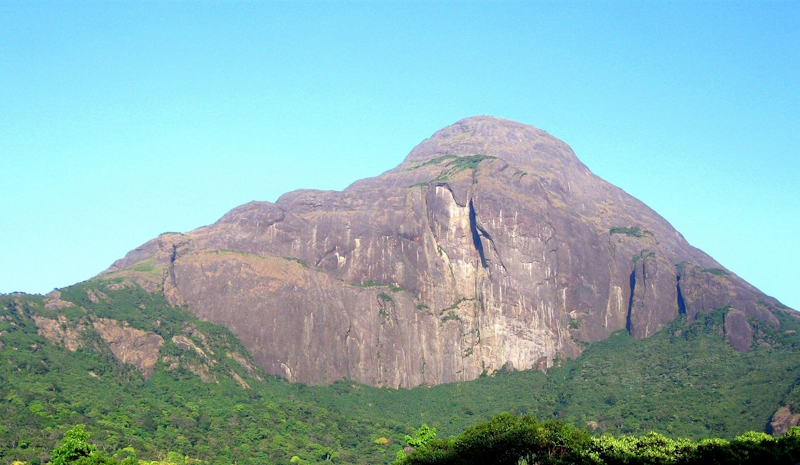 Public domain via Wikimedia Commons
Public domain via Wikimedia Commons
The highest mountain in the immediate vicinity, Agastya Mala (above; also known as Agasthyamalai or Agastyarkoodam) was chosen as the best way to determine the effect of height, and an observatory was erected in 1855, while magnetic declination observations were taken simultaneously at different stations across Travancore. These were compiled from 1852 to 1869, totalling 340,000 readings! Broun’s work was eventually published in 1874 as the Trevandrum magnetical observations, but the names of many Indian assistants and computers who made this possible have been lost to time, or simply did not get the recognition they deserved.
In her article Travancore's magnetic crusade: geomagnetism and the geography of scientific production in a princely state, author Jessica Ratcliffe sheds light on how a ‘semi-autonomous princely state such as Travancore would engage the scientific community in Europe’ in the nineteenth century. The initial push by Maharaja Swathi Varma to establish the observatory produced results, and his desire to keep it as a permanent fixture has also been achieved: now part of the University of Kerala, it is still in use, calculating astronomical data for calendar preparation by religious bodies.
The observatory is also open to the public on weekdays, and stargazing is possible with a range of telescopes available. My appetite whetted by my discoveries in the Sabine correspondence, I hope to visit one day!


